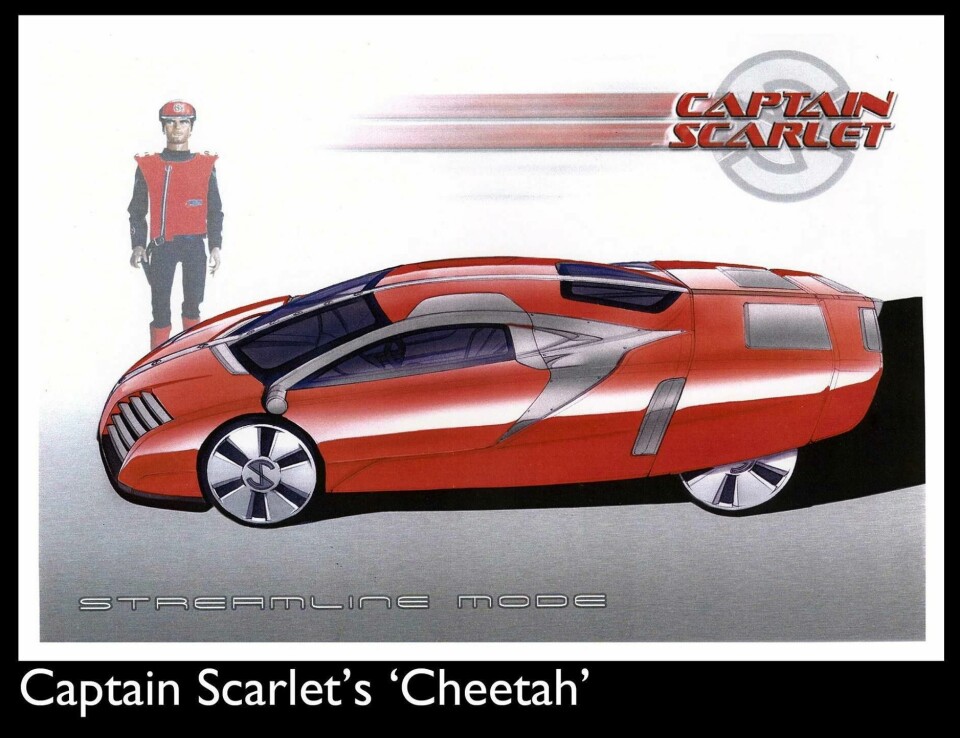
Designing the virtual car. A real or imagined product? By Peter Stevens
Peter Stevens relives the process of creating a supercar for the (now retro) television show Captain Scarlet
Just two and a half years ago I lost a very dear friend, a film maker called Gerry Anderson. His death did not come as a complete surprise to those who knew him well; he had suffered from Alzheimer’s disease for more than two years before his death. During that time he and his son Jamie became active supporters of Britain’s Alzheimer’s Society.

I had the very good fortune to work with Gerry Anderson in 2004 on his re-make of the Captain Scarlet TV show. He had assembled a large team of young CGI and computer modellers to, at last, rid himself of what he called the ‘infuriating puppets’ that he is well remembered for in the UK.
He relished the freedom given by the new technology and was captivated by the creative solutions his young group offered him. As well as the complex storylines, it was the hardware and the vehicles that really fascinated him. There can be few older designers who, having watched Joe 90, Thunderbirds, Captain Scarlet or Doppelgänger, didn’t want to push their own car design boundaries just as much as Gerry did. Gerry should be credited with being the first person to publicly use the word ‘Supercar’, the title of one of his 1961 TV series about – yes, a supercar.

Having worked as a trainee film maker at the UK’s Ministry of Information, Gerry had dreams of directing huge budget, widescreen epics. To his disappointment, his first job with the BBC was organizing the string-manipulated puppets for a kids TV programme called ‘The Adventures of Twizzle’. He was determined to make puppet films more professional and in doing so he developed ‘Supermarionation’, a word he thought suggested advanced technology, “but actually meant posh puppets, thinner strings and great sets” according to Gerry. These ever more complex TV shows became great hits with kids both in the UK and in America.
The opportunity to work on Captain Scarlet’s new Spectrum Cheetah was wonderful. The design process meant that I spent a lot of time with Gerry Anderson talking over the functionality of most of the vehicles that were to be in the TV show. Gerry had a very clear idea as to what the Cheetah should be able to, he didn’t want it to actually fly, there were other machines for doing that, but it did need to leap over problems on the road; and hopefully that would require a degree of transformation, he said.

So for the Captain Scarlet car I prepared lots of quick sketches which, being a complete professional, Gerry reviewed with all the seriousness of an auto industry boss. I presented highly finished illustrations and scale drawings just as one would for a ‘real’ car design project. The car was then modelled using an Alias CAD system so that it could be animated, with me suggesting how its motion should look.
He chose ‘LightWave’ for the show because of the high level of quality that he required. Gerry’s vision was a stylish, but photorealistic world. The show was NOT animation in the traditional sense of the word, Gerry wanted a show that’s more like simulated live action, so he used live action directors, and live action designers and storyboarders.

The brainstorming around the Cheetah was always good fun and usually centred around a long lunch at Pinewood, a decent bottle of red wine and outrageous observations from Gerry. He once told me why alien women in movies or on TV always had such magnificent breasts. He said, “That’s the way we like ’em, and thanks to the technology, that’s the way we can make ’em.” Probably sounds sexist now, but 20 years ago it was just part of his character and sense of humour.
Gerry Anderson loved his cars and loved talking cars. He really wanted to build a full-size prototype of the Cheetah, but when funding did not materialize he contented himself with scale models, he was always great at the merchandising side of his business.




